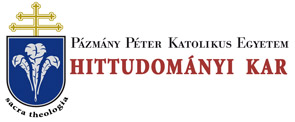Folia Theologica 16. (2005)
Pál Bolberitz: The Beginnings of Hungarian Philosphy (The Reception of Nicholas of Cusa in the work of "De homine" by Peter Monedulatus Csokas Laskoi)
12 P. BOLBERITZ Latin, as well. The quick expansion of the Protestantism in Hungary - in spite of of the miserable circumstances appearing under the Turkish rule - gave an impetus to the progress of the Hungarian culture. A lot of Hungarian young people studied in Wittenberg during the 16th century15 16. The Protestant lords opened printing houses, partial and entire translations of the Holy Bible were published, among the publications there were also a few of theological polemic essays, which - according to the spirit of the age - provided an enormous number of arguments from the works of the Patristic and the ancient Greek and Roman philosophers. Thus here as well - though with a certain renaissance independence - philosophy served for apologetical purposes of faith. In the 16th century the Counter-Reformation assailed in a similar genre, enumerating the philosophical-theological arguments of the Baroque scholastics, but Peter Pázmány after his lectures held in Latin in Graz, began to write philosophical works in Hungarian. Among the Protestants in the 17th century the same was accomplished - written in Hungarian - by Janos Apáczai Csere, studying in Utrecht and staying in Gyulafehervar, after then staying and teaching in Kolozsvár, who endeavoured to elaborate the Hungarian philosophical terminology, though with only a slight success (e. g. the concept of "sub15 Dudith (Dudics?) András (Andreas Duditius Sbardellatus, 1533-1589) is a prominent scholar of Latin and Greek of his age. He first published the works of four antique authors. The phenomenon of comets and Black Death (plague epidemic), apperaing very frequently in the 1570s led to the spread of the old superstitions. Dudith, as a genuine humanist, fighted against the superstitions with the weapons of ratio and science. It is manifested in his masterpiece written in Latin about the comets. (Short Commentary to the Phenomenon of Comets. Basel, 1579.) 16 Laskoi Csókás (Monedulatus) Peter, who himself studied in Wittenbergben, in the introduction of his book of „De homine” published in Wittenberg, too in 1585, enlisted the names of the Hungarian students, staying at that time in Wittenberg, naturally in the Latin version of the names, which was very typical at the universities of the Renaissance age. The Book’s so called „Epistola dedicatoria” (1585), which includes the list of the names, Laskoi recommended to the consul, Samuel Seelfisch, (who very apparently rendered a lot of assistance to the Hungarian students, studying in Wittenberg). The „Epistola dedicatoria” was first translated into Hungarian from the original Latin by Mrs. Kovács Dr. Stefánia Vermes, the citations of verse in Greek has also been translated by her, in which Janos Virág, the philologist had assisted to her. (Handscript, Bp., 1991).
